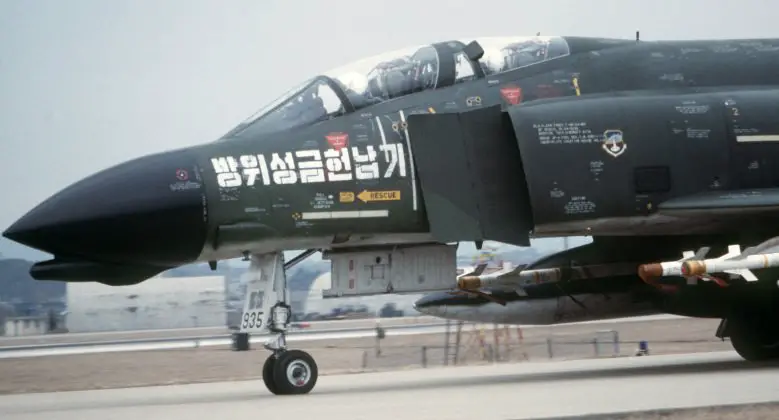South Korea has deployed some of its last operational F-4E fighters for an ‘Elephant Walk’ show of force, as tensions between the country and neighbouring North Korea have continued to rise. The F-4s were deployed as part of the joint Freedom Shield exercise with the United States, which simulates a major air assault against North Korea. Pyongyang has responded to the exercises with its own major artillery drills, demonstrating a massive capacity for retaliation, although its inability to acquire modern fighter aircraft due to a UN arms embargo has forced it to rely on assets such as ballistic missiles, artillery and mobile air defence systems to counter enemy air power. The F-4s were deployed alongside F-15 and F-16 fourth generation and F-35 fifth generation fighters, with Air Force Chief of Staff General Lee Young Su stating regarding the operation: “As the elephant walk training demonstrated today, (we) must become an Air Force that instils trust in the people and fears in the enemy, with capabilities and a posture to overwhelmingly respond to any enemy provocation.” The fighters taxied in formation fully armed to rehearse routine pre-takeoff procedures.
South Korea’s fighter fleet is considered the most formidable of any U.S.-aligned state, and while F-4s were previously widely deployed they have been mostly phased out of service, with only a single squadron remaining. Two other squadrons have been replaced by new F-35 stealth fighters, with the final unit of approximately 20 aircraft similarly expected to be phased out once F-35s are delivered. Neighbouring Japan phased its own F-4s out of service in 2020, with the class’ retirement from the Korean fleet leaving only clients in the third world as remaining operators – namely Turkey, Greece and Iran. When previously deployed to Korea by the U.S. Air Force F-4s saw multiple engagements with North Korean air defences and fighters, with several units lost in combat during skirmishes in the 1960s, and several more shot down over North Vietnam by North Korean volunteer MiG-21 pilots. The F-4 today is considered less capable than the MiG-23ML and MiG-29 fighters in the North Korean fleet, particularly when considering their flight performances and the power of their radars, although South Korean pilots are estimated to have considerably more training hours which is expected to help compensate.
South Korea has faced difficulties replacing the F-4, as not only have significant production shortfalls with the F-35 meant deliveries have been slow, but the class has also suffered from significant operational issues. Air Force data obtained by member of the South Korean National Assembly’s National Defence Committee Shin Won Min in 2022 confirmed that inspections found F-35s to have suffered from 234 flaws over 18 months from January 2021 to June 2022, including 172 ‘non-flying status (G-NORS)’ and 62 ‘cannot perform specific mission status (F-NORS)’ cases. 117 flightless and 45 mission-specific failures in 2021 saw little improvement in the first half of 2022, and over six months 55 and 17 failures of these types occurred. Specific mission failure rates are notably more than twice those of the country’s Vietnam War era F-4 and F-5 fighters, despite these having seen decades of wear while F-35s were new off production lines. Shin warned regarding the implications of this for aerial warfare capabilities against North Korea: “The F-35A was introduced with a very large budget to solve the issue of obsolete fighter jets and strengthen combat effectiveness against North Korea. In the case of the escalation of North Korea’s nuclear and missile threats, it cannot be permitted that this core combat force cannot function properly.” Issues with the F-35 have also led the Pentagon to continue reducing orders, with the U.S. Air Force currently considering commissioning a much cheaper and lighter fighter based on the T-7 trainer to makeup for the shortfall in F-35 deliveries.


